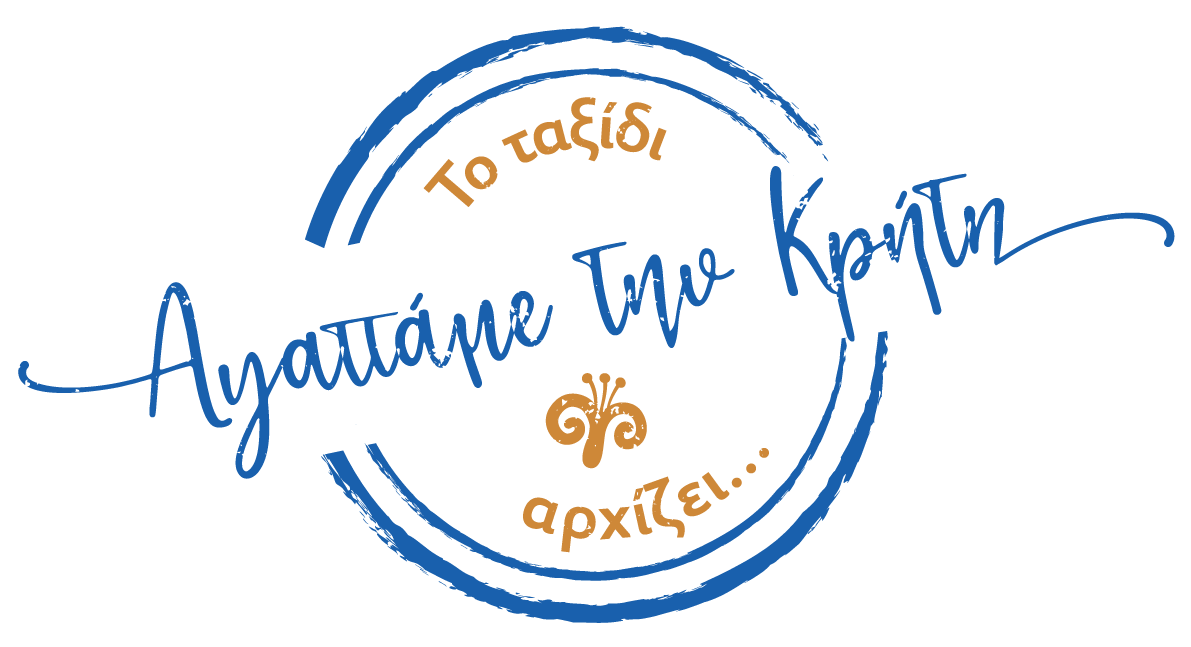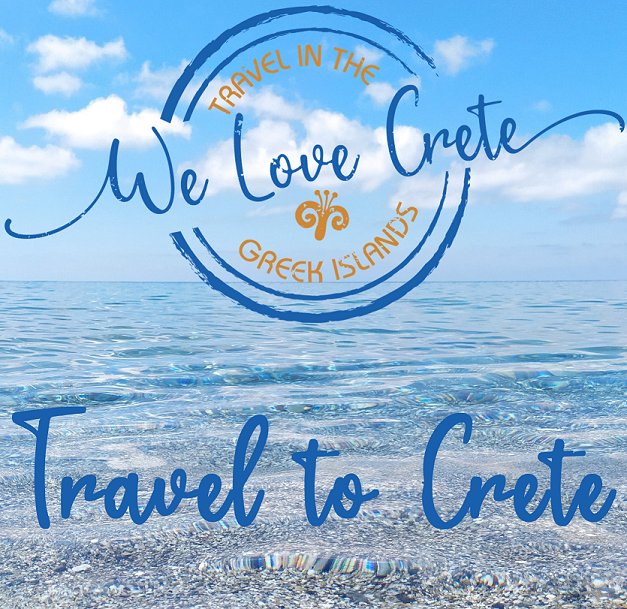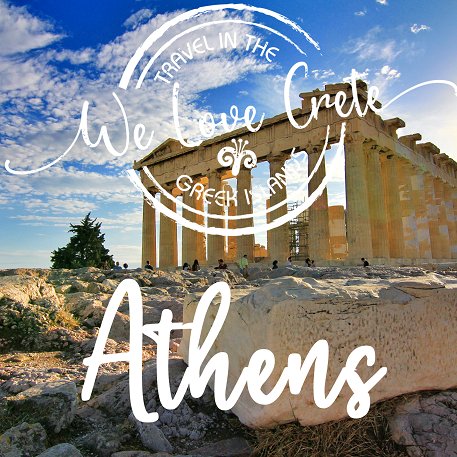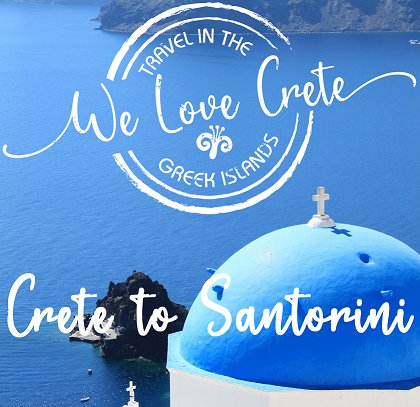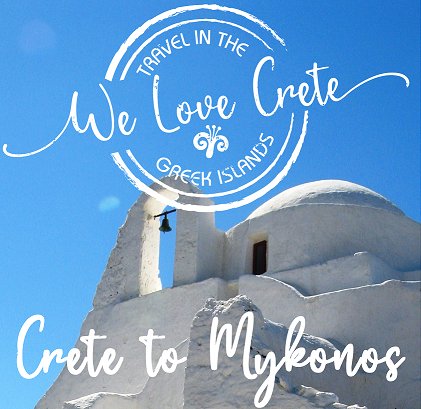This page may contain affiliate links, see our disclaimer here.
Cretan Diet
By Katia Luz
What is the Cretan Diet? What is the Cretan Mediterranean Diet?
- vegetables
- fresh wild greens and herbs
- fruits
- whole grains
- pulses; lentils, bean and peas
- nuts
- olives and olive oil
- fish and seafood
- honey
- sheep and/or goat milk products; cheeses and yogurt
- wine and raki
- add the way of life of the Cretan people!
 Olives on the tree in Crete
Olives on the tree in CreteThe beauty of the Cretan diet is its simplicity; fresh, natural and pure. No fancy sauces or preparations.
Mix fresh fruit and nuts and vegetables, plenty of olive oil and very little meat. Less sugar and saturated fats. A wine or two. Some raki.
Sounds good!
Proudly, Crete has one of the highest registrations of organic produce in all of Greece, which is a wonderful way of continuing land practices unchanged over hundreds of years and ensuring healthy eating and a healthy planet.
 Horta is a general term for wild greens, of which there are many varieties
Horta is a general term for wild greens, of which there are many varietiesAfter winter rains, horta or wild greens flourish, and grannies are busy out in the country lanes with their bags collecting the lush dark green 'weeds'. There are actually many different types of horta...getting to know them and how to cook them is one of the pleasures of life in the country of Crete, learning about Cretan food.
The Cretan Diet
What do they eat in Crete?
Whatever your tastes, you will find something wonderful about Cretan food. Is it the atmosphere? Is it the air? The mountains? The soil? The fresh water? The Mediterranean? Is it the farmer or the cook?
This will take a few hours of diálogo dialogue... so let’s pour another wine and discuss.
Dópio - local, is a great Greek word to know if you are travelling. It can refer to just about any food or drink or preparation, and ensures your hosts know you want the real thing. Ask for dópio crassi - local wine.
 Gramvousa Taverna, Chania Crete
Gramvousa Taverna, Chania CreteAt a taverna you could simply say dópio fagitó - local food. Your hosts will know what you mean. At a fishing village of course ask for dópio psári - local fish.
Don't forget your Greek coffee - because of course, much of your day in Greece is focussed around the kafe or the kafenion and coffee.
The preparation of the coffee is very important and a source of endless discussion in every household and indeed, every kafenion...of course this is also part of the Cretan diet.
See more about Cretan cuisine in this wonderful story by Chef Byron
See more about the wild greens of Crete here.
Small Mixed Plates
Meze is the word for small plates of appetisers typically eaten before a meal. We like to make a meal of them, adding many plates of vegetables and seafood.
You can do this in any taverna on the island, just add as you go. Be sure to ask for horta or wild greens and perhaps a plain plate of tomatoes. Add good company, wine and conversation, before you know it, you're having a meal!
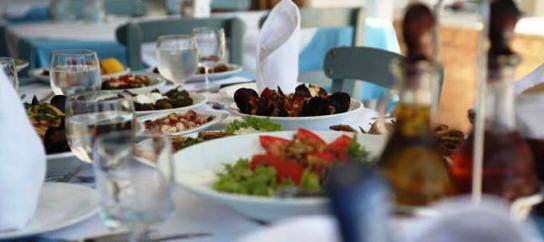 A taverna in Crete by the sea, with lots of little plates of food called 'meze'
A taverna in Crete by the sea, with lots of little plates of food called 'meze'Rustic Salad
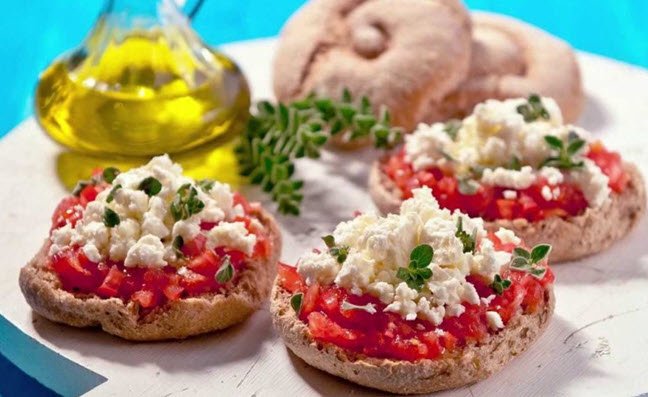 Dakos is a rustic salad of Crete
Dakos is a rustic salad of Crete Crete is full of olive groves and olive oil is one of the main foods of the island
Crete is full of olive groves and olive oil is one of the main foods of the islandDakos Salad - pictured above is one of our favourite salads which is full of staple products of the Cretan diet - paximadia or barley krithári rusks, tomatoes, olives, olive oil and feta with herbs - see our recipe here to enjoy a fresh salad.
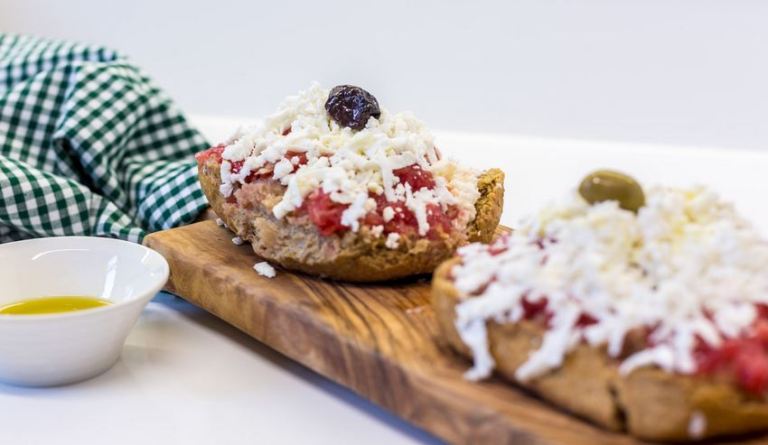 Dakos salad on a platter with olive oil in a bowl beside it
Dakos salad on a platter with olive oil in a bowl beside itOlive Oil
 Olive groves of the Terra Creta farm in Kolymvari, western Crete
Olive groves of the Terra Creta farm in Kolymvari, western Crete
Olive oil
is at the heart of the Cretan diet, it is grown all over the island and
used in just about every meal. For cooking and dressing, and for many
other uses, you need some good extra virgin organic olive oil such as
the ones for sale on this page.
Oil has unsaturated fats and so is much healthier than other types of fat, yet full of goodness, especially when it is natural rather than boiled or fried, it also has loads of anti-oxidants.
Wine
Crete produces many wines and it is possible to ask for dopio crassi where ever you eat on the island. If you have a particular interest in wines, visit some of the many wine-growing regions on the island and view the vineyards, taste the produce and understand the land - wines of Crete - just be sure to let the light dance in your glass as you drink it down.
Raki or Tsikoudia
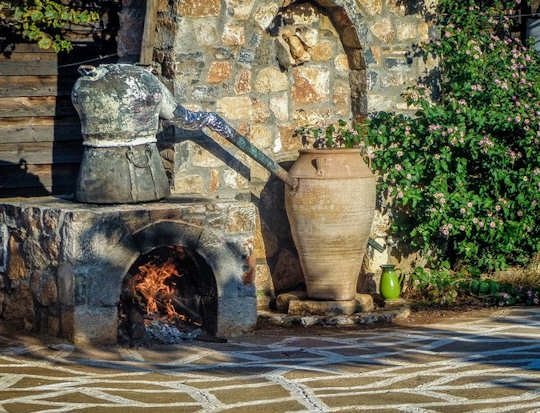 A 'rakokazano' in Crete - a still for the making of raki
A 'rakokazano' in Crete - a still for the making of raki
Tsikoudia Τσικουδιά is a clear spirit made from the by-product of wine grapes. The distillation process uses locally produced grapes already pressed for their juices for wine, in this way nothing is wasted and harvest time becomes busy with the preparation of raki or 'tsikoudia' as it is known in the local dialect.
A glass or two of this spirit a day helps the metabolism and is credited as part of the mystery of the Cretan diet. And it certainly doesn't hurt as you sit by the fire in winter!
 Kazani fire and glasses of raki, this is typically 40% alcohol or higher, so take it slowly
Kazani fire and glasses of raki, this is typically 40% alcohol or higher, so take it slowlyExperience the Local Cretan Diet
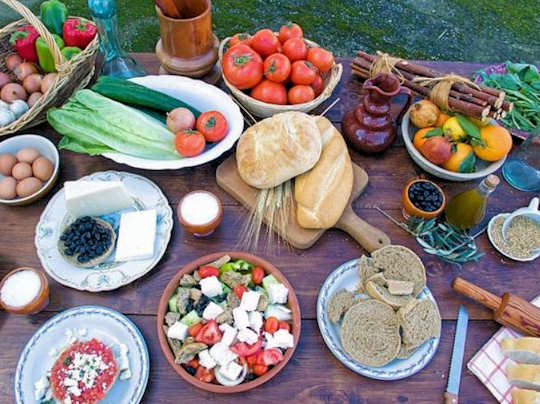
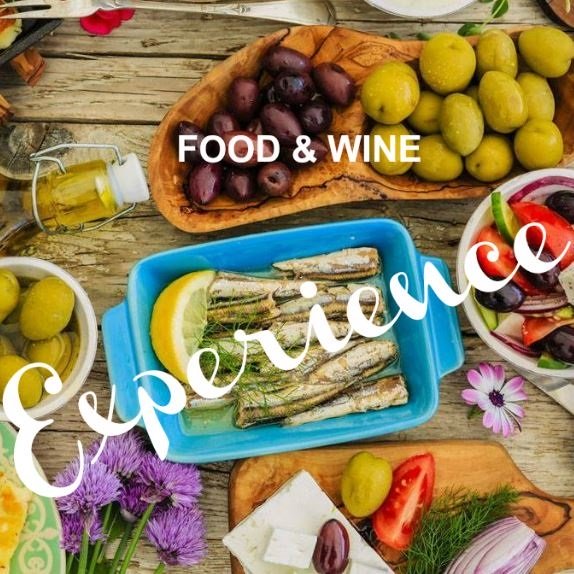
Winery and Olive Oil Mill Tasting Tour with Lunch From Rethymno
Discover
real Cretan virgin olive oil and learn how it is produced, taste a
traditional Greek coffee in the olive oil mill, experience Dourakis
Winery. Visit biological natural vineyards. Try the intense taste of
raki or tsikoudia. This half-day tour is 5 hours with lunch and leaves
from Rethymno and region.
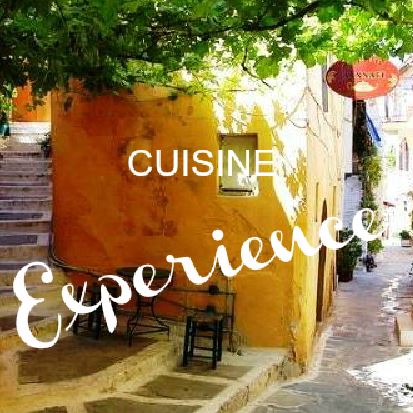
Crete Food Tour of Chania Old Town - a 4 hour walking tour of the picturesque Venetian town with food tasting. Be led by a local down little-known laneways to out-of-the-way cafes and try tidbits of Cretan cuisine. Stop at colorful food shops and taverns, selling wine, olive-oil, cheese, herbs, spices, and more, and enjoy street food samples along the way.
Quality Label of Cretan Cuisine

Our tip is to try to choose as many meals as you can in Cretan restaurants, serving authentic local cuisine.
Keep an eye out for restaurants with the certification quality symbol awarded by the
Region of Crete in partnership with the non-for-profit 'Agronutritional Cooperation of the region of Crete'
The basic requirements met by a restaurant awarded the 'Quality Label of Cretan Cuisine' of the Region of
Crete are as follows:
- They offer Cretan dishes, in significantly greater quantities than their other dishes (a minimum 65% of the menu will need to be Cretan dishes).
- There is an exclusive use of local products that are central for the Cretan cuisine and are abundantly produced in Crete (e.g. cheese, sheep and goats meat, fresh vegetables).
- There is an exclusive use of extra virgin and virgin olive oil in cooking, including deep frying.
- There dishes are of notable quality which should be representative of the Cretan cuisine and will be able to easily please the average consumer.
- They use a minimum number of local wines, making sure that the Cretan vineyard is well represented.
- They comply with all hygiene and food safety standards, in accordance with existing food safety legislation.
Cretan Diet Videos
Enjoy this uplifting video of Kriti and the Cretan diet - Incredible Flavours.
In this video from Tastes of Crete, see Mike prepare zucchini blossoms stuffed with rice and crushed wheat.
In this video from Incredible Crete, you will see that the gastronomy of Crete is one of the most important reasons to visit here. The Cretan diet, synonymous with longevity, offers many flavours and aromas that fascinate all the senses.
Endemic wild grasses and aromatic herbs, excellent quality dairy products, fruits and vegetables, honey flavored with the herbs of the Cretan land, its snails, xerotigana, kalitsounia and the famous wedding pilaf make up the delicious map of Kriti.
You always taste these dishes accompanied by the pure smiles and the authentic hospitality of its inhabitants.
Photographer Matthieu Paley of National Geographic captures the joyful people that have lived on the Mediterranean diet long before it became a fad.
On this small group escorted tour by Travel Editions, Cathy Bartrop gets to eat lots and find out more about Cretan cuisine and food culture.
Getting Here
Take a 1 hour flight from Athens to Heraklion with Aegean Airlines or Olympic Air, with many flights available per day.
Or take a 9.5 hour overnight ferry from Pireaus port of Athens to Heraklion port.
More on flights and ferries below.
Car hire in Crete is a really good idea as it is a large island 60 km by 260 km. There is so much to explore.
When you book with our car rental partners - Rental Centre Crete - you are supporting a local company with excellent service and easy online booking. We are sure you will be well looked after by the team. Choose from hybrid, electric or regular vehicles.

We trust you have enjoyed these tips from the We Love Crete team. Evíva!
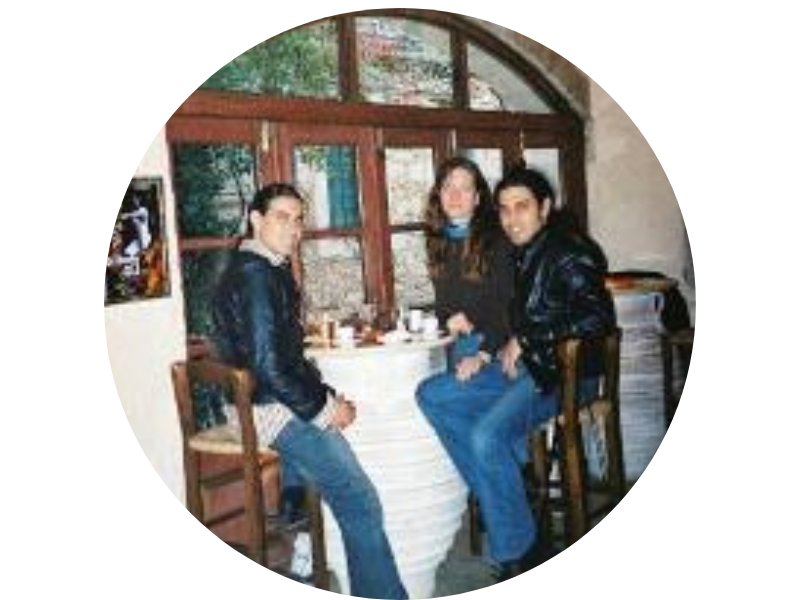
Yiásas!
Anastasi, Apostoli & Katia
are the We Love Crete team
We just love sharing our passion for Crete, Greece and travel
About us Contact Us Kaló taxídi!
- Home
- Crete Food Wine and Spirits
- Food & Wine
About the Team
Yiásas!
Anastasi, Apostoli & Katia
are the
We Love Crete team
We just love sharing our passion for Crete, Greece and travel
About us

